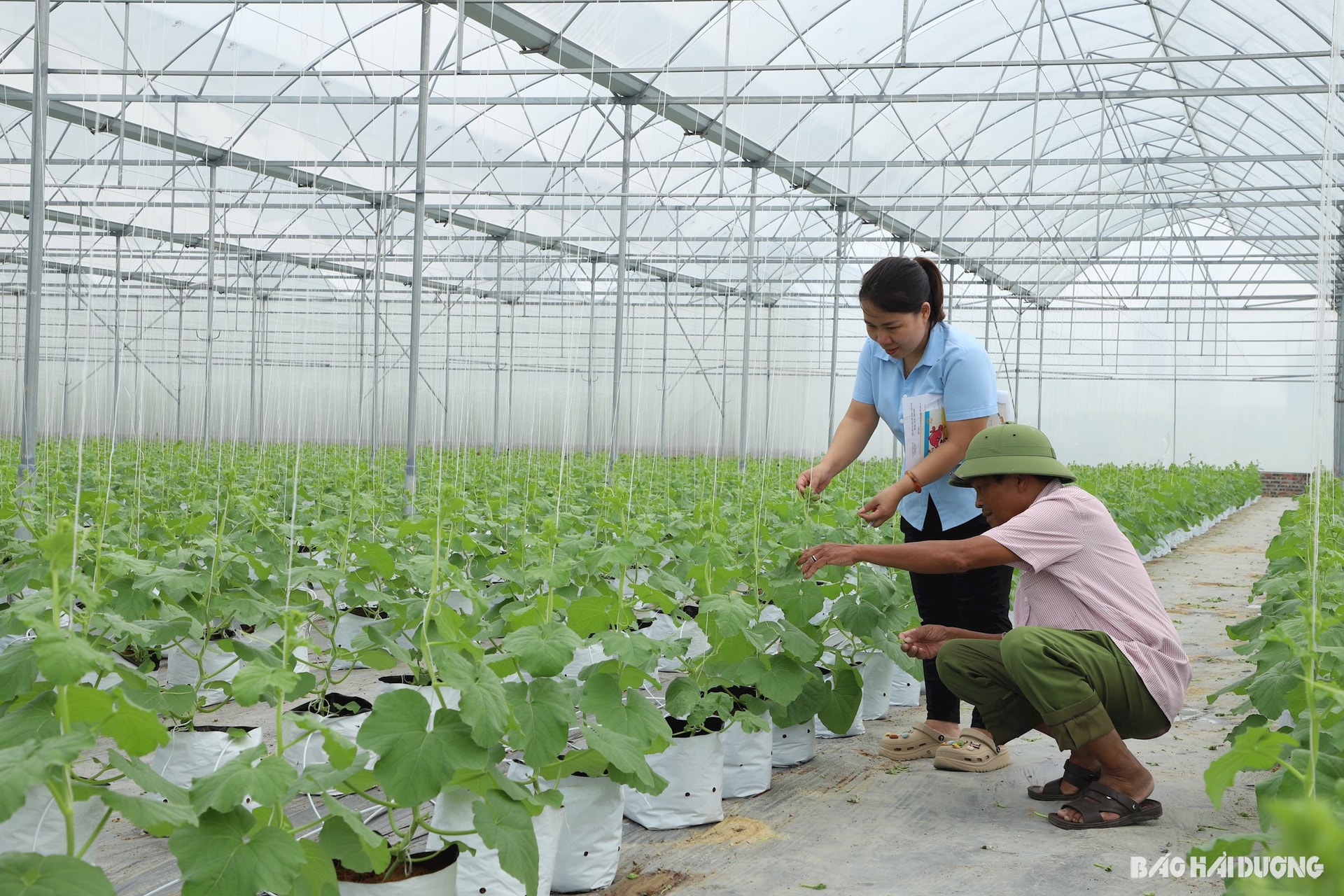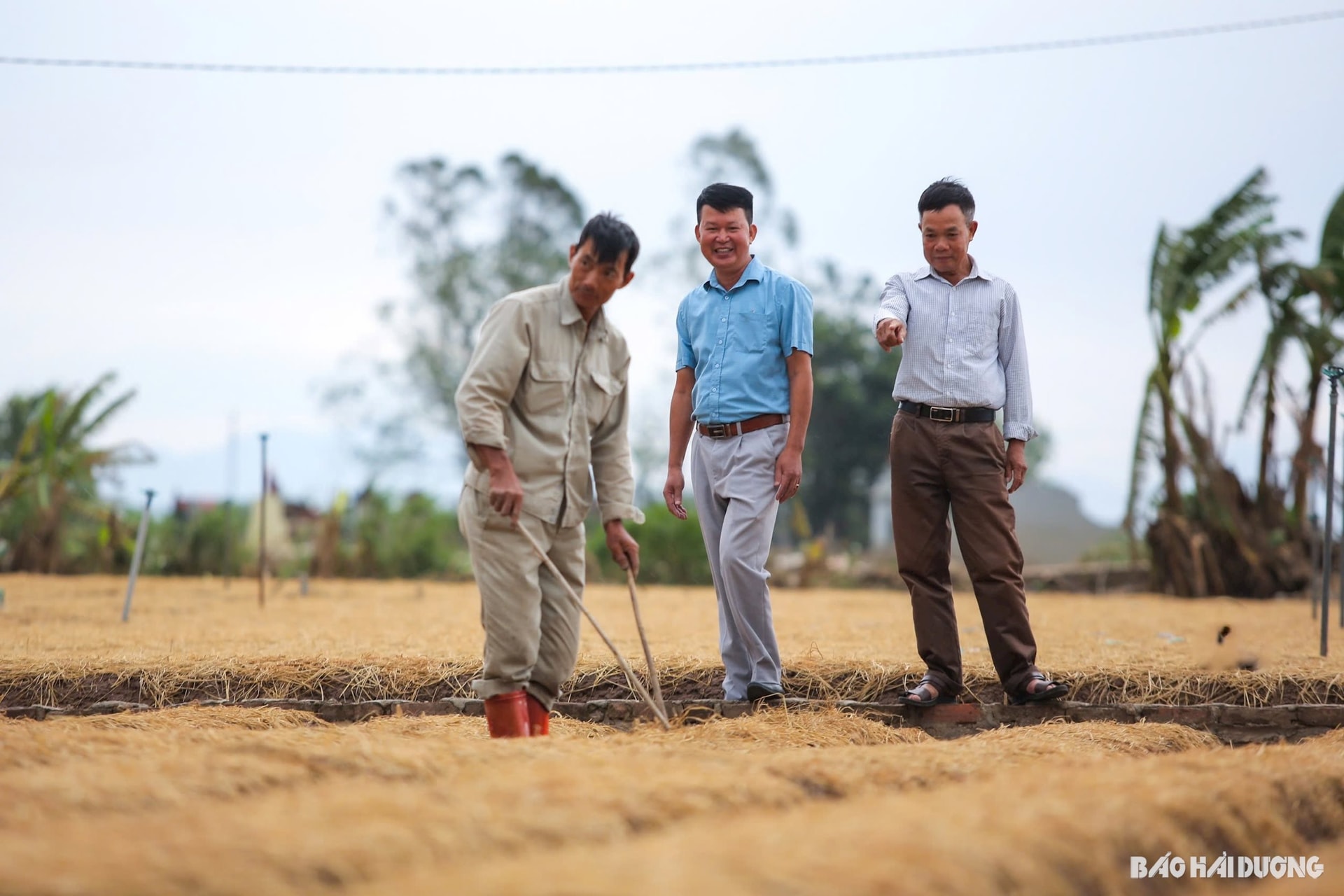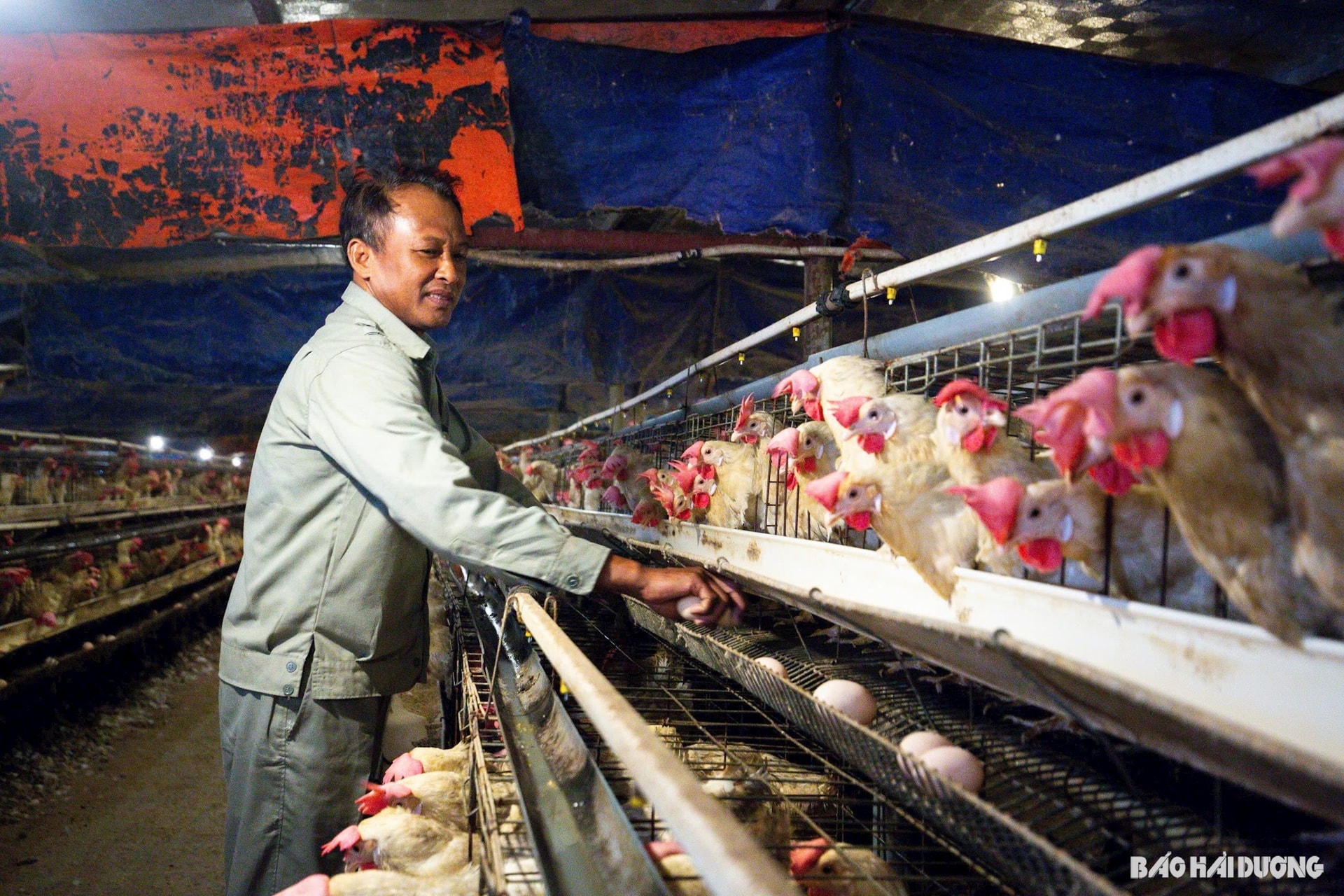"Secret" of the first 3 model new rural communes in production in Hai Duong
Dinh Son, Cam Van (Cam Giang), Pham Tran (Gia Loc) are the first three communes in Hai Duong to achieve the title of model new rural commune in production. In addition to ensuring the general criteria, each commune has its own "secret" to achieve this title.
Awakening the dynamism of farmers

After storm No. 3, dozens of hectares of collapsed greenhouses of Tan Minh Duc Cooperative in Pham Tran Commune (Gia Loc) have been restored. In some greenhouses, rows of melons and cucumbers replanted about ten days ago have begun to grow. Most cooperative members have fully prepared the conditions to rebuild production.
On his family's 7.5 sao of greenhouse, Hoang Van Lap is taking advantage of the opportunity to harvest the lucky melon areas that were less affected by the storm. After the harvest, he will rotate to grow cucumbers to serve the year-end market. "I am one of the first 3 farmers in this commune to build greenhouses. We have experience, are always united, and are ready to support each other in production, so the difficulties will certainly pass soon. In just a few months, this whole area will be filled with green crops again."
Taking us to visit the production area, Mr. Hoang Anh Thu, Deputy Director of Tan Minh Duc Cooperative, said that most of the greenhouse area in Pham Tran commune had collapsed, causing great damage after storm No. 3. However, the revival is coming back as members are making full use of their existing capacity, experience, diligence, and creativity to restore and stabilize production. "At least 50-60% of the greenhouse area here will have products to serve the upcoming Tet market," Mr. Thu confidently said.
According to Mr. Thu, the soil conditions in Pham Tran commune are just like many other places in the province. The commune has become a place with a high-tech agricultural model and is one of the first three localities in the province to achieve the title of a model new rural commune in production due to many reasons. The diligence, hard work, solidarity, and dynamism in production of farmers here play a fundamental role, the origin of this success.
More than 10 years ago, farmers in Pham Tran commune had the mindset of clean agriculture to create sustainable values. The safe vegetable growing area following VietGAP standards here was gradually expanded in the period 2010-2015. During this time, Tan Minh Duc Cooperative was established to gather and unite member households with the same aspirations. They formed delegations to travel to many high-tech agricultural production areas in many provinces and cities in the country to learn from their experiences.
In 2017, about 4,000 m2 of vegetables grown in greenhouses and net houses in Pham Tran commune were established but failed right from the first crop. Farmers here did not give up. They united to overcome difficulties, continued to research and learn from experience to apply to local reality. With the support of the province and some organizations, the production of cooperative members gradually stabilized, the production scale, output, quality and value of products continuously increased. Up to now, Pham Tran is the commune with the largest area of greenhouses and net houses in the province with dozens of hectares.
Chairman of the People's Committee of Pham Tran Commune, Nguyen Xuan Tho, also shared the same opinion when he stated that the hard-working farmers who proactively adapt to the times are the foundation for today's model new rural achievements. The eagerness to learn helps farmers in the commune now be able to skillfully use technology in controlling automatic irrigation systems, in promoting products on e-commerce platforms, social networks, etc. The products of cabbage, melon, cucumber, and cantaloupe produced by farmers in the commune have become the main products of the locality, achieving OCOP stars and bringing great economic value, helping the lives of the people here become more and more prosperous.
“Awakening” the role of cooperatives

The post-storm production recovery on the alluvial land outside the Thai Binh River dike in Cam Van Commune (Cam Giang) is also taking place very urgently. Wherever the land is dry, the farmers here will make beds and plant carrots right there.
Mr. Nguyen Van Mich, Director of Cam Van Commune Agricultural Service Cooperative, along with local leaders, went down to the fields to encourage, inquire, and receive recommendations from the people about the production situation...
Mr. Do Van Hoan and his wife in Van Thai village have just planted 5 sao of carrots outside the dike and excitedly said: "The cooperative here is always a solid support for us to confidently develop production. They always stand by and support the people to the best of their ability. We were very happy when we heard the Director of the Agricultural Service Cooperative say that he had advised the commune to support seed money for families whose carrot growing areas were damaged by the storm. This will be the motivation for us to soon green the alluvial land outside the dike."
Cam Van is one of the communes with a large carrot production area with 149 hectares in the fields and outside the Thai Binh River dike. From carrots, a production chain has been formed to ensure food safety, serve the export market and typical OCOP products... This is one of the important criteria for Cam Van to become one of the three communes achieving a model new rural area in production.
To achieve the above results, the leaders of Cam Van Commune People's Committee highly appreciated the role of the Agricultural Service Cooperative. From a period of moderate operation, the role and potential of the cooperative were "awakened" at the right time. In the period of 2015-2016, after the work of land consolidation and concentrated production zoning was completed, the cooperative proactively contacted to find the Japanese TI 3 carrot variety for trial planting locally. This carrot variety showed superior characteristics compared to old carrot varieties such as F444 such as short growing time, beautiful appearance, guaranteed quality, and was favored by the market...
Farmers with land areas in 8 carrot growing areas of Cam Van commune simultaneously switched to growing TI3 variety. Agricultural service cooperatives opened many classes to transfer planting and care techniques, especially strictly following safe production processes, using only quality seeds, fertilizers, and pesticides in the list. Along with that, they researched and helped farmers apply water-saving irrigation technology, find outlets for products...
In recent years, the carrot yield in Cam Van commune has always been maintained at 1.8-2 tons/sao, 1.5 times higher than before. The total carrot output of the crop reached about 15,000 tons, of which 12,000 tons met export standards to markets such as Korea, Japan, and China. The whole commune has established 5 large-scale carrot purchasing and processing facilities for export. The value that carrots bring has contributed significantly to changing the lives of people here.
Linking vegetable growing for export

The agricultural land resources of Dinh Son commune (in the same district of Cam Giang) are not really outstanding compared to many localities in the province. However, this commune has become a model new rural commune in production thanks to the association to build concentrated vegetable export areas.
Mr. Bui Quang Phuong, Director of the Agricultural Service Cooperative of Dinh Son Commune, said that before storm No. 3, farmers in the commune had promptly harvested about 10 hectares of chili peppers, mainly supplying them to a business in Ho Chi Minh City for export. Currently, people are preparing to harvest the winter-spring rice crop to free up land for growing vegetables for export.
Previously, farmers in Dinh Son commune also grew winter vegetables but in a fragmented and ineffective manner. From 2021 to now, after being introduced by the District Department of Agriculture, Dinh Son Commune Agricultural Service Cooperative has cooperated with Hanoi Green Food Company Limited in Cao An commune to grow vegetables for export to Korea with 2 vegetable products, each crop from 10-20 hectares. The company supports all costs of land preparation, vegetable seeds and commits to purchasing all products.
The above vegetables take root in Dinh Son land, yielding 8-1.3 tons/sao, 1.5 times higher than normal vegetables. Depending on each stage, the purchase price has a difference but still ensures farmers earn a profit of 3-4 million VND/sao. "Dinh Son still has a lot of area that can develop vegetable export areas. We will propose that businesses expand the export market share to expand the growing area of these vegetables," said Mr. Phuong.
Dinh Son commune has also mobilized many farm and ranch owners to shift to investing in high-tech agricultural production in the direction of commodities and environmental protection, focusing on areas such as raising river fish in ponds, clean chicken eggs, etc. The income of farms and ranches ranges from 100 million VND to over 1 billion VND/model/year.
To achieve the model new rural commune in production, the above 3 communes have fully met the criteria such as: having 2 or more cooperatives operating effectively and having stable value chain linkage contracts; the locality has a plan, regularly maintains and develops recognized OCOP products and develops new OCOP products; builds high-tech agricultural models, organic agriculture or agricultural models applying mechanization; has concentrated commodity production areas for key products; has traceability software application; ensures quality, efficiency, food safety, adapts to climate change... Production develops so that the income of people in these communes reaches at least 74.8 million VND/person/year (according to regulations of the Provincial People's Committee).
